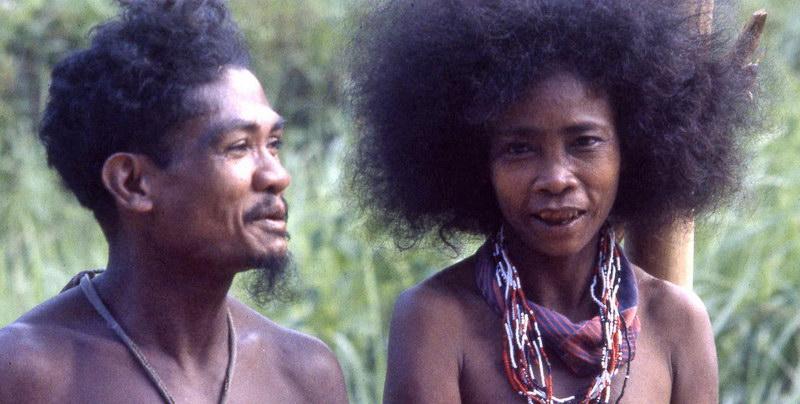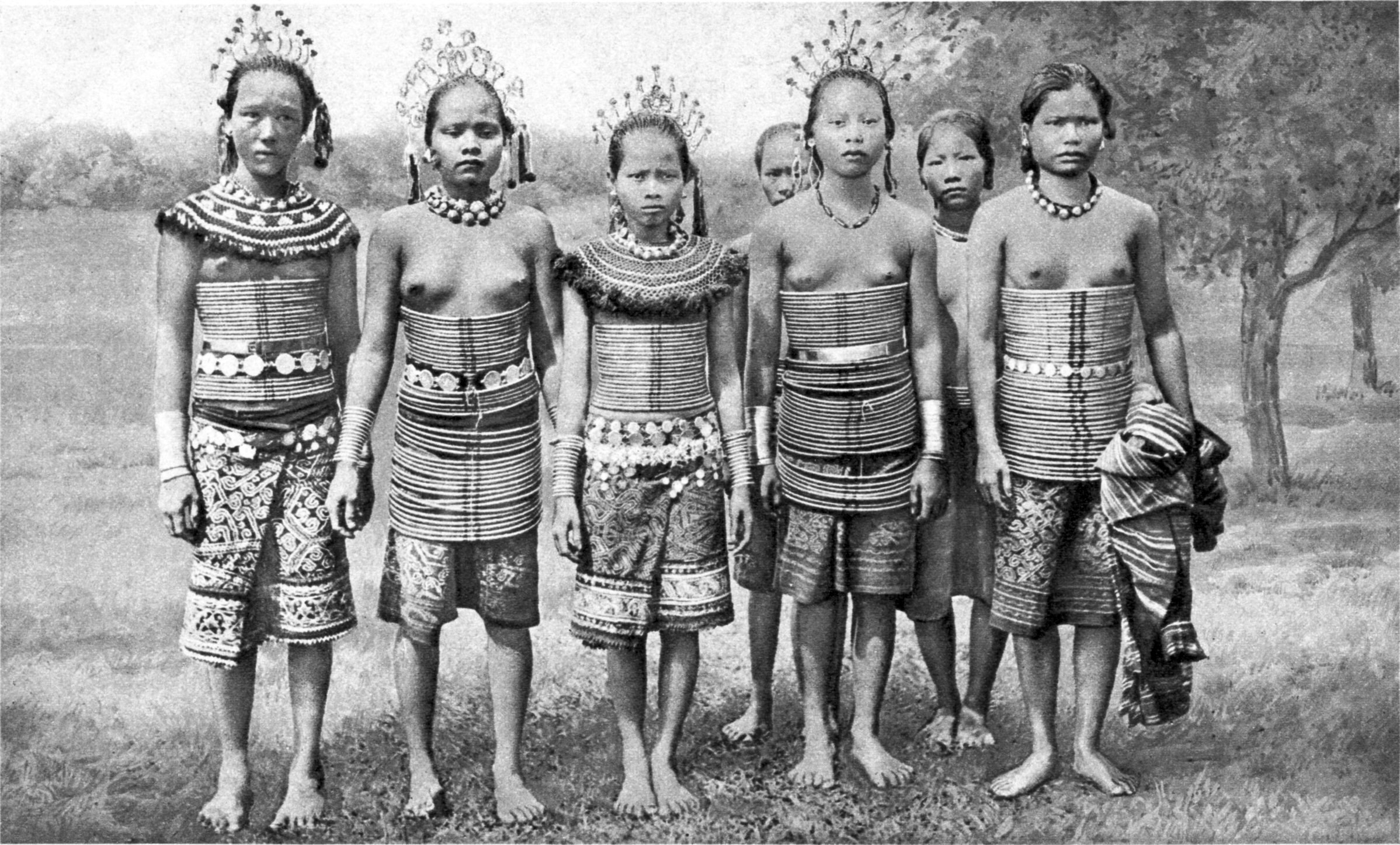LOCATION OF ISLAS FILIPINAS
LOCATION:
ten degrees north latitude, and a hundred and sixty-one degrees longitude from the line of demarcatio



They are among the very smallest peoples in the world, the average height of the men being about 145 centimeters, or the height of an American boy of twelve years; the women are correspondingly smaller. They have such dark-brown skins that many people suppose them to be quite black; their hair is very wooly or kinky, and forms thick mats upon their heads. In spite of these peculiarities, they are not unattractive in appearance. Their eyes are large and of a fine brown color, their features are quite regular, and their little bodies often beautifully shaped.
The appearance of these little savages excited the attention of the first Spaniards, and there are many early accounts of them. Padre Chirino, who went as a missionary in 1592 to Panay, begins the narrative of his labors in that island as follows: “Among the Bisayas, there are also some Negroes. They are less black and ugly than those of Guinea, and they are much smaller and weaker, but their hair and beard are just the same. They are much more barbarous and wild than the Bisayas and other Filipinos, for they have neither houses nor any fixed sites for dwelling. They neither plant nor reap, but live like wild beasts, wandering with their wives and children through the mountains, almost naked. They hunt the deer and wild boar, and when they kill one they stop right there until all the flesh is consumed. Of property they have nothing except the bow and arrow.

Manners and Customs.—The Negritos still have this wild, timid character, and few have ever been truly civilized [29]in spite of the efforts of some of the Spanish missionaries. They still roam through the mountains, seldom building houses, but making simply a little wall and roof of brush to keep off the wind and rain. They kill deer, wild pigs, monkeys, and birds, and in hunting they are very expert; but their principal food is wild roots and tubers, which they roast in ashes. Frequently in traveling through the mountains, although one may see nothing of these timid little folk, he will see many large, freshly dug holes from each of which they have taken out a root

The Negritos ornament their bodies by making little rows of cuts on the breast, back, and arms, and leaving the scars in ornamental patterns; and some of them also file their front teeth to points. In their hair they wear bamboo combs with long plumes of hair or of the feathers of the mountain cock. They have curious dances, and ceremonies for marriage and for death
Distribution.—The Negritos have retired from many places where they lived when the Spaniards first arrived, but there are still several thousand in Luzon, especially in the Cordillera Zambales, on the Pacific coast, and in the Sierra Madre range; and in the interior of Panay, Negros, Tablas, and in Surigao of Mindanao.

The Malayan Race.—Origin of the Race.—It is thought that the Malayan race originated in southeastern Asia. From the mainland it spread down into the peninsula and so scattered southward and eastward over the rich neighboring islands. Probably these early Malayans found the little Negritos in possession and slowly [32]drove them backward, destroying them from many islands until they no longer exist except in the places we have already named.

With the beginning of this migratory movement which carried them from one island to another of the great East Indian Archipelago, these early Malayans must have invented the boats and praos for which they are famed, and have become skillful sailors living much upon the sea.

Effect of the Migration.—Life for many generations, upon these islands, so warm, tropical, and fruitful, gradually modified these emigrants from Asia, until they became in mind and body quite a different race from the Mongol inhabitants of the mainland

Characteristics.—The Malayan peoples are of a light-brown color, with a light yellowish undertone on some parts of the skin, with straight black hair, dark-brown eyes, and, though they are a small race in stature, they are finely formed, muscular, and active. The physical type is nearly the same throughout all Malaysia, but the different peoples making up the race differ markedly from one another in culture. They are divided also by differences in religion. There are many tribes which are pagan. On Bali and Lombok, little islands south of Java, the people are still Brahmin, like most inhabitants of India. In other parts of Malaysia they are Mohammedans, while in the Philippines alone they are mostly Christians

The Wild Malayan Tribes.—Considering first the pagan or the wild Malayan peoples, we find that in the interior of the Malay Peninsula and of many of the islands, such as Sumatra, Borneo and the Celebes, there are wild Malayan tribes, who have come very little in contact with the successive civilizing changes that have passed over this archipelago. The true Malays call these folk “Orang [33]benua,” or “men of the country,” Many are almost savages, some are cannibals, and others are headhunters like some of the Dyaks of Borneo
In the Philippines, too, we find what is probably this same class of wild people living in the mountains. They are warlike, savage, and resist approach. Sometimes they eat human flesh as a ceremonial act, and some prize above all other trophies the heads of their enemies, which they cut from the body and preserve in their homes. It is probable that these tribes represent the earliest and rudest epoch of Malayan culture, and that these were the first of this race to arrive in the Philippines and dispute with the Negritos for the mastery of the soil. In such wild state of life, some of them, like the Manguianes of Mindoro, have continued to the present day.

MANDAYA AND MANOBO TRIBES
Characteristics of the Tribes of Mindanao.—In Mindanao, there are many more tribes. Three of these tribes, the Aetas, Mandaya, and Manobo, are on the eastern coast and around Mount Apo. In Western Mindanao, there is quite a large but scattered tribe called the Subanon. These people make clearings on the hillsides and support themselves by raising maize and mountain rice. They also raise hemp, and from the fiber they weave truly beautiful blankets and garments, artistically dyed in very curious patterns. These peoples are nearly all pagans, though a few are being gradually converted to Mohammedanism, and some to Christianity. The pagans occasionally practice the revolting rites of human sacrifice and ceremonial cannibalism
======================================================
main philippine history http://www.gutenberg.org/files/38269/38269-h/38269-h.htm
1 http://www.gutenberg.org/files/38269/38269-h/38269-h.htm#ch5
========================================================
No comments:
Post a Comment